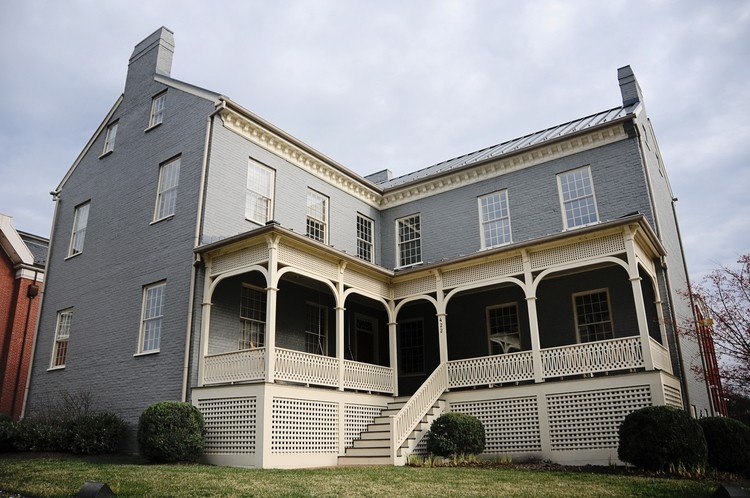James Park House
Introduction
Text-to-speech Audio
Images
The James Park House. Photo from the Gulf & Ohio Railways website.

Backstory and Context
Text-to-speech Audio
In 1797, Tennessee’s first governor, John Sevier, purchased this lot and built the foundation for a house. After running out of money for the project, he put his efforts back into his Marble Springs farm located south of Knoxville. In 1801, Sevier sold it to his son, George Washington Sevier, who later sold it to South Carolinian merchant James Dunlap in 1807. James Park, an Irish immigrant who served as Knoxville’s second and fourth mayor, finally bought the property five years later. He then built this two-story Flemish bond brick Federal home. The L-shaped addition came in the 1820s.
The Park family remained in this home until selling it in 1912. After that, the house was used for offices, a World War I Red Cross workshop, and an ear, nose, and throat clinic. In 1945, the Knoxville Academy of Medicine bought the house and used it as a museum with space for offices, classes, and meetings. The Academy sold the property to Sam Furrow and Natalie Haslam in 2002. They then sold it to Gulf and Ohio Railways, and it has since been used as Gulf & Ohio’s headquarters. Architect Lee Ingram led the renovation of the structure, which including removing a 1968 rear medical auxiliary and auditorium and restoring the house's Victorian-era porch. Work was completed around 2007.
Sources
James Park House (53). Knox Heritage. Accessed February 04, 2019. http://knoxheritage.org/our-work/neighborhood-tours/historic-downtown-knoxville-walking-tour/james-park-house/.
The Future of Knoxville's Past. Knoxville-Knox County Planning. 2006. Accessed February 04, 2019. https://archive.knoxmpc.org/historic/Knoxv_fp_2006.pdf.
